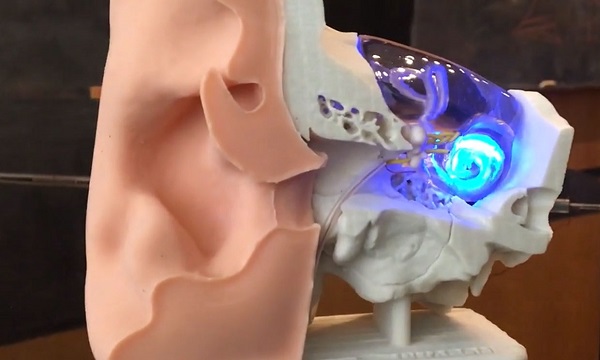Cochlear implant is a device using electrodes to stimulate the auditory nerve to help hearing-impaired people to “hear.” But it cannot deliver complex sound as the electrode current does not move from the electrode to an auditory neuron directly. Researchers have been exploring the possibilities to replace electricity with light in cochlear implants via optogenetics technology.

(Image:University Medical Center Göttingen)
Optogenetics is a research technique which involves using light to control neurons that have been genetically modified to be activated with light. A new study used the method to stimulate the cochlea of gerbils. The result of the study showed that light stimulation generated auditory responses in deal gerbils, suggesting that Optogenetics technique might be applied in developing improved cochlear implants.
Devices with multi-channels have to be tested to measure frequency resolution, as the current study only used single optical channel. Micro LED arrays could be an option for device design as well as optical fibers.
There is still a long way before the approach could be practiced on humans because the genetic modification of activating cells with light has not been done with human cells yet.












